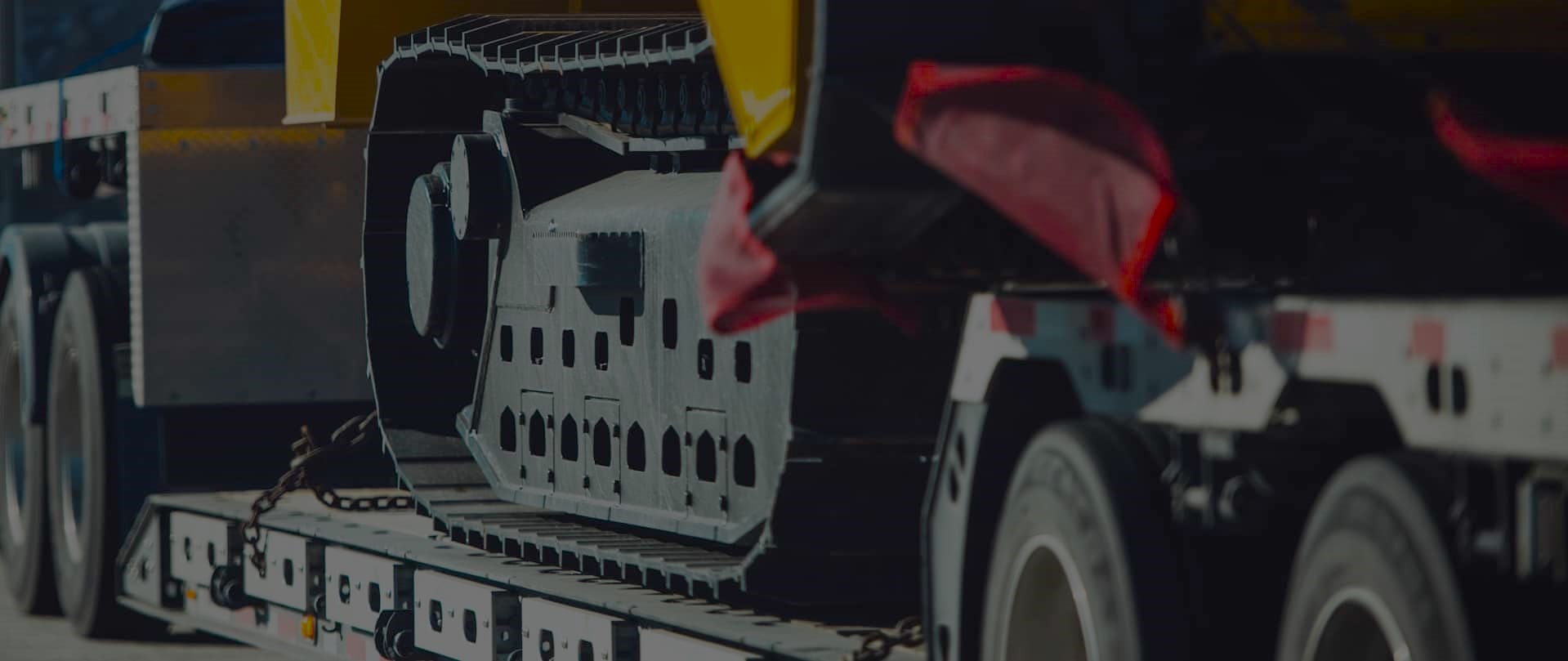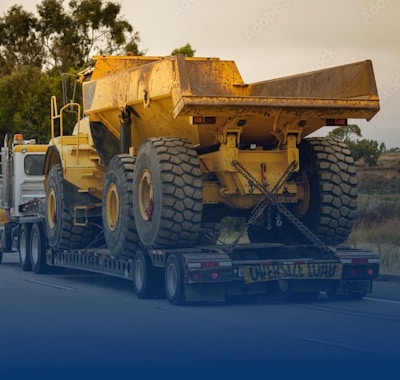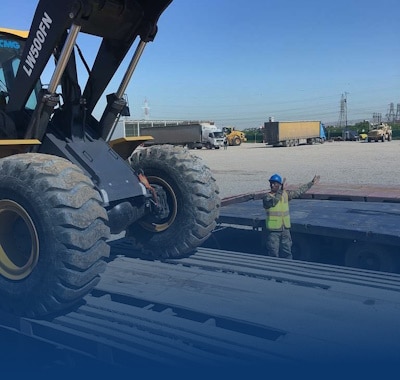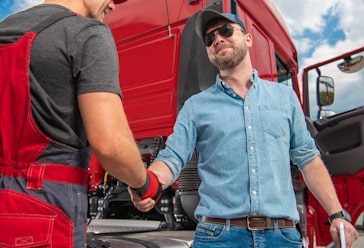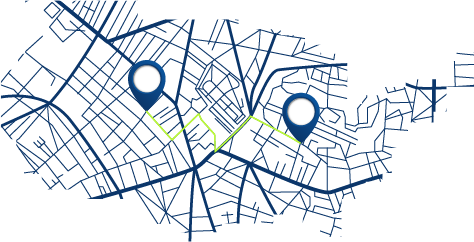Navigating Oversize Loads Through Appalachian Highways
Freedom Heavy Haul can offer expedited Pickup and Delivery for any size shipment anywhere in the USA. Contact us today for No Hassle, No Pressure Pricing.
Why careful route planning matters: Steep grades, winding turns, and older bridges raise the stakes on safety and timing for heavy haul moves in this mountain region.
Small measurement differences can change everything. Width over 8 ft 6 in, height near 13 ft 6 in, lengths past 53 ft, or gross weight above 80,000 lb often trigger extra permits and escort needs.
Good route planning links accurate measurements, trailer choice, permits, and escort teams. Add route surveys, drone checks, and truck-aware maps to spot low bridges, soft shoulders, and tight switchbacks.
Real-time weather, traffic, and FMCSA securement checks guide departures and help avoid costly delays. Marine legs can sometimes cut permit steps and reduce pilot car counts on certain corridors.
What you will gain: A clear framework to pick a safe route, meet regulations, protect cargo, and keep heavy haul projects on schedule.
Understanding Oversize and Overweight Limits Before You Plan
Before you map a heavy haul, confirm the exact measurements and mass that decide permit steps and road choices. Accurate numbers drive trailer choice, permit applications, and whether a route is feasible.
Legal size thresholds and common baselines
National baselines usually flag a shipment as oversized when it exceeds 8 ft 6 in wide, about 13 ft 6 in high, 53 ft in length for standard trailers, or 80,000 lb GVW. State rules vary; California, for example, treats heights over 14 ft and some long combinations as restricted and enforces special permits.
When crossing a threshold changes everything
Cross even one threshold and you trigger permit requirements, travel-hour limits, and possible escort vehicles. Securement hardware and protrusions add inches that matter.
Quick decision path: confirm load dimensions and weight first, then determine permit needs and trailer type.
- Weight and axle spread affect bridge postings and road choices.
- Trailer selection—lowboy, double-drop, extendable—follows height and length limits.
- Early contact with permit services avoids last-minute route denials.
Why the Appalachians Are Different: Terrain, Infrastructure, and Risk
Mountain corridors demand extra caution: steep grades and narrow turns change every hauling decision. Planners must treat route selection as a safety exercise, not a shortest-path problem.
Steep grades, tight switchbacks, and soft shoulders
Long climbs heat brakes; long descents require tight speed control. Soft shoulders and tight switchbacks become real hazards for heavy haul and standard freight alike.
Staging zones, careful escort coordination, and conservative speed profiles reduce rollover and brake-fade risk.
Low bridges, narrow lanes, and older structures
Many corridors have low bridges, narrow lanes, and aging spans. That forces conservative height and turning assumptions in the route plan.
Maps can lie: tree canopies, utility lines, and posted clearances often need field verification before departure.
Seasonal realities: spring thaw and variable weather
Spring thaw restrictions limit weight on certain roads and bridges. State and county rules can ban heavy haul movements during thaw windows.
Real-time weather and traffic shift departure timing. Always build multiple vetted alternates and confirm local restrictions early.
Safety-first rule: prioritize verified clearances, manageable grades, and conservative planning over the shortest route.
- Weight-restricted bridges can force long detours; identify them early.
- Two-lane mountain roads reduce recovery options; plan pull-offs and escorts.
- Choose low-traffic windows to cut delay, braking, and exposure to incidents.
Core Route Planning Principles for Heavy Haul Success
Begin with verified size and center-of-gravity data so equipment and permits match the mission. Exact load dimensions and size weight figures set trailer choice, securement design, and permit needs. Start here to keep the plan realistic and safe.
Start with precise measurements and securement needs
Confirm length, height, width, and gross mass before any mapping. Identify securement points and planned crane support so rigging does not add surprise height or width.
Verified measurements let you engineer for grades, cornering, and braking. That focus improves safety and reduces last-minute rework.
Match trailer types to clearances and turning radii
Translate numbers into equipment: lowboy, double-drop, extendable, or multi-axle. Consider bridge postings and tight turns on narrow roads when selecting gear.
- Begin with true center of gravity so trailer selection and securement work on steep grades and switchbacks.
- Map must-avoid constraints first—low bridges, weight-restricted structures, and hairpin turns—then layer preferred corridors.
- Define staging areas for checks, brake cool-down, and inspections that long combinations can safely reach.
- Pre-permit alternate routes and lock fuel and HOS-compliant stops to avoid backtracking.
Communicate the plan. Align driver experience with the route profile and set a clear dispatch and escort communications plan. Good route planning and tight coordination keep the haul on schedule and protect people and cargo during transport.
Challenges of routing oversize loads through Appalachian highways
Moving very large equipment across state lines uncovers many small rules that add up fast. Regulations change at each border and sometimes by county. That affects permit requirements, escort vehicle rules, and allowed travel windows.
Construction zones, curfews, and peak traffic can remove preferred options. Lane drops or detours can make a mountain pass unusable during busy hours. Those shifts create cascading delays and higher fuel use on long grades.
Software helps, but human checks matter. Local DOT contacts and county offices can confirm short-term bans or events that maps do not show. Pilot cars or extra escort vehicles may be required on short notice when a dimension crosses a trigger.
Plan with slack. Build extra time and flexible permits so a small hold won’t force costly detours.
- State-to-state permit and escort differences complicate a continuous route.
- Curfews force daylight or off-peak moves and need creative staging.
- Traffic slowdowns on long grades increase brake wear and inflate delays.
- Keep a lessons-learned log for repeat choke points to cut future risk.
| Item | Typical Variation | Impact | Action |
|---|---|---|---|
| Permit timing | Same-day to 2-week lead | Trip cancellations; costly delays | Apply early; track approvals |
| Escort rules | None to multiple pilot cars | Crew size and staging needs | Confirm with state DOTs |
| Curfews / bans | Night bans; spring thaw windows | Route closures; reroutes | Build slack; plan alternates |
| Construction zones | Temporary lane drops | Impassable for long combinations | Field-verify or reroute early |
Permits Without Delays: Multi‑State and Local Compliance
Securing the right authorizations early keeps a heavy haul from stalling at a county line. Oversized and overweight moves typically use single-trip, annual, or superload permits. Each state sets specific rules, and cities or counties may add extra conditions.
Single-trip permits cover a one-time move. Annual permits suit repeat, predictable work. Superload permits apply when a load exceeds major thresholds and may require engineering reviews or police escorts.
City and county overlays that can change timing
Local overlays can add event blackouts, school-hour bans, or short-term weight restrictions. These rules often create narrow travel windows and force staging near origin or destination.
Submitting early, tracking approvals, and avoiding denials
Apply early with verified dimensions, axle weights, and vehicle specs. Mismatched paperwork can trigger reapplication and delays.
Tip: a permit service can file multi-state applications and monitor approvals to cut administrative friction.
- Superloads may require bridge analysis, route surveys, or special escorts that extend lead time.
- Changing weight or dimensions after approval can invalidate permits and force rescheduling.
- Align permit windows with driver HOS, daylight, and known construction schedules to avoid conflicts.
| Permit Type | When It Applies | May Require | Action |
|---|---|---|---|
| Single‑trip | One-off moves past state thresholds | Standard state review | Submit 3–14 days early; verify measurements |
| Annual | Frequent repetitive routes | State approval; route limits | File with fleet data; track renewals |
| Superload | Very large or heavy shipments | Bridge study; police escort; engineering | Start 4+ weeks early; book surveys |
Checklist to close gaps: confirmed dimensions, axle weights, trailer type, escort plan, route survey notes, and contingency alternates. Keep records and notify authorities if a route change occurs to remain compliant and avoid fines.
Escort Vehicles and Pilot Cars: When, Where, and How Many
Escort crews turn a complicated haul into a controlled movement by managing sight lines and traffic gaps. Many heavy hauls need pilot cars or escort vehicles with signage, lights, and radios. Over‑height shipments often may require a pole car to measure clearances ahead of utility lines and low spans.
Trigger dimensions and pole car use
Typical triggers: widths above 8 ft 6 in, heights near state limits, or extreme lengths that block sight lines. A pole car leads for vertical checks on wire and bridge clearance.
Certification, communications, and coordination
Hire certified escort operators when required and confirm state training and equipment standards. Use two‑way radios, an agreed channel plan, and simple hand signals for tight maneuvers.
Tip: document the escort configuration in permit paperwork to avoid approval delays.
State nuances and terrain effects
Each state sets escort vehicle requirements; some segments may require extra pilot cars in dense traffic or metro zones. Mountainous roads increase spacing, advance warning, and the value of rehearsals—desktop simulation or a drive‑through with escorts reduces surprises.
- Verify certification, signage, and radios before departure.
- Include speed, brake‑check, and staged pull‑offs in a short safety briefing.
- Clarify flagger and temporary stop duties near construction and narrow bridges.
Route Surveys Done Right: From Desktop to Shoulder Walks
A thorough route survey turns map assumptions into field‑proven facts before the convoy rolls.
Start on the desktop with mapping and historic imagery, then confirm by walking targeted segments or flying a drone. This catches sagging utility lines, tree canopies, and soft shoulders that digital layers miss.
Validating bridge heights, utility lines, and tree canopies
Measure actual bridge heights against posted values and your load dimensions. Add margins for suspension travel and road crown to match legal limits and permit notes.
Confirming turn radii, staging, and recovery options
Test tight intersections and switchbacks with cones or chalk lines to verify trailer tracking and vehicle clearances. Mark safe staging areas, pull‑outs, and brake‑check zones that are legal and accessible for long combinations.
Tip: use drones or pole cameras to preview tight entries at industrial sites; record GPS‑referenced photos to share with permitting staff and escort teams for unified situational awareness.
Also assess surface conditions, drainage, and slopes where heavy weight can cause rutting or bottoming out. Document tow access and nearby flat areas as recovery options. Anticipate dynamic items like event barricades or seasonal growth.
| Tool / Method | Primary Use | When to Apply | Action |
|---|---|---|---|
| Desktop maps & imagery | Initial corridor planning | Begin route planning | Flag likely obstacles; schedule field checks |
| Drone / pole camera | Overhead clearance & tight entries | Complex sites, low spans | Capture photos; note exact heights |
| Field walk & cones | Turn radii and staging validation | Intersections, switchbacks | Measure tracking; mark pull‑outs |
| GPS notes & photos | Permits and escort briefings | After survey | Share files with teams and authorities |
Pre‑move checklist: verified clearances, measured load dimensions, staging spots, recovery plan, and documented photos for permitting and the escort vehicle brief.
Technology That De‑Risks Mountain Moves
Smart tools now make route planning less guesswork and more proof. Truck-aware GPS, digital maps, and AI-based logistics turn complex corridor data into safer choices. These systems highlight low bridge clearances, weight postings, and legal truck corridors so planners and drivers see true constraints before departure.
Truck-aware mapping and AI optimization
AI factors: bridge heights, grades, axle limits, and turn radii. The software then proposes compliant corridors and staging spots that match permits and equipment.
Real-time GPS, traffic, and weather integrations
Live tracking and feeds warn teams about road closures, construction, and sudden storm cells. Drivers and escort crews get alerts to shift timing at passes, tunnels, and tight pinch points.
Data logging for permits and compliance
Record everything: breadcrumb trails, timestamps, and detour notes prove why a team chose a new route when conditions changed. That log supports permit officers and helps meet regulatory reviews.
Practical checklist: integrate permit windows into routing software, use driver apps for sync, enable predictive analytics for high-risk segments, and keep spare batteries and backup maps on hand.
- Use predictive analytics to flag seasonal risks like spring thaw and repeat incident sites.
- Link fuel optimization to grade-aware routing to trim cost without cutting safety.
- Validate tech with field surveys—human checks still catch one-off hazards.
Safety and Securement Practices That Hold Up in the Hills
Secure the load to resist forward, lateral, and vertical forces before the convoy starts. FMCSA cargo securement standards set minimum tie‑down counts, distribution rules, and inspection cadence for heavy haul. Apply those rules with extra margin on steep grades and tight curves.
Inspect early: re‑tighten all chains and binders after the first 50 miles and again at every stop. Settling and strap stretch are common on rough roads; prompt checks prevent shifts that can cause accidents or fines.
FMCSA rules applied to steep grades
Distribute weight evenly to protect axles and improve braking on long descents. Use chains and binders rated above the size weight and anchor points angled to resist forward and lateral motion.
Load checks: first 50 miles and every stop thereafter
Pre‑trip and en‑route checklist:
- Anchor integrity and anchor angle
- Edge protection and chocks
- Binder torque and chain condition
- Visual indicators for shifting (paint marks or flags)
Account for transitions and low-clearance gear that can bottom out and loosen hardware. Cold or wet conditions reduce strap elasticity and chain friction, so increase inspection frequency in those weather conditions.
Reminder: document inspections with photos and a short log. A well‑kept record supports compliance and post‑move learning.
Driver technique matters: enforce speed discipline, engine braking, and extended following distances to minimize sudden load forces. An oversized load must arrive as tightly secured as it left; safety beats schedule every time.
| Item | Why It Matters | When to Check | Action |
|---|---|---|---|
| Tie‑down rating | Prevents breakage under dynamic forces | Pre‑trip; after 50 miles; each stop | Use higher‑rated chains/binders; torque to spec |
| Weight distribution | Protects axles and improves stability | Loading; pre‑trip; mid‑route if shifted | Adjust load and add blocking/chocks |
| Edge protection | Prevents strap wear and failure | Pre‑trip; after rough transitions | Install wear pads; re‑tension often |
| Weather checks | Strap elasticity and chain grip vary | Before climbs and after storms | Increase inspection cadence; replace compromised gear |
Weather, Traffic, and Construction: Building Contingencies
Weather, traffic, and work zones shape contingency plans before a single mile is driven. Real-time checks for weather and traffic should precede every departure. Confirm alternates so closures, curfews, or incidents won’t strand a convoy on narrow mountain segments.
Alternate paths must be pre-vetted for clearances, permit compatibility, and staging. Coordinate timing with local DOTs and flaggers near construction zones to safely pass lane drops or temporary barriers.
Fuel, rest stops, and overnight parking
Pre-approve fuel stations and rest areas that can handle long, low, or wide combinations and an escort vehicle. Match stops to HOS windows and plan overnight parking that allows safe set-up and inspections.
Spring thaw and high-wind go/no-go rules
Use spring thaw calendars and wind thresholds to set clear go/no-go criteria. High winds increase rollover risk and can force road closures. Spring weight bans protect fragile road conditions and bridges.
Quick checklist: live traffic and weather feeds, two vetted alternates, pre-approved fuel and parking, documented permit-compliant pivots, and communication templates for dispatch, drivers, and pilot cars.
- Monitor live traffic to avoid cascading slowdowns on long grades and reduce brake wear.
- Stage crews near choke points so segments can re-sequence when windows open.
- Debrief after weather-affected moves to refine thresholds and alternates for future planning.
| Risk | Preventive Action | When |
|---|---|---|
| Closure/Incident | Activate alternate route | Immediate |
| Fuel gap | Use pre-approved stations | Before departure |
| Spring thaw / high wind | Enforce go/no-go rule | Daily check |
Cost Control in Difficult Corridors
Cost control starts with verifying bridges, tolls, and realistic travel times before trucks roll. Good verification prevents last-minute detours that add fuel use and time. It also stops fines for violating weight or clearance restrictions.
Avoid costly rework: align permit windows with practical ETAs so you do not pay reapplication fees when approvals slip. Pick corridors that balance tolls and mileage to lower total spend without risking narrow or low-clearance roads.
Avoiding costly detours, tolls, and permit reapplications
Confirm bridge limits and clearances up front. That simple step prevents route changes that burn fuel and add labor hours.
- Map toll-versus-mileage tradeoffs and choose the corridor with the lowest total cost.
- Pre-book parking and staging to cut time spent searching near mountain passes.
- Track labor and escort hours so planners see the real cost of shortcuts.
Fuel planning for grades and stop-and-go segments
Use grade-aware fuel planning. Top off before long climbs and select truck-friendly stations that can handle long combinations. That lowers refuel time and reduces unexpected delays.
Schedule runs to avoid peak congestion. Fewer stop-and-go miles save fuel, brakes, and time.
Quick rule: bake fuel and toll estimates into bids, monitor real-time conditions, and run a short post-move cost review to refine future plans.
| Cost Item | Risk | Preventive Action |
|---|---|---|
| Fuel | Extra consumption on long climbs and detours | Grade-aware planning; top off before climbs; use truck-friendly stations |
| Tolls | High direct fee vs. longer mileage | Compare toll vs. fuel/labor tradeoff; choose lowest total cost |
| Permit reapplication | Fees and schedule ripple from expired windows | Align ETAs with permit windows; monitor approvals |
| Labor & escorts | Overtime from delays and staging searches | Pre-book staging; track hours; plan off-peak moves |
When to Mix Modes: Overland vs. Marine Legs
Mixing water and road transport can shorten timelines and cut permit exposure when a barge route sits near the origin or destination. Marine segments often avoid urban curfews and heavy congestion, while moving larger dimensions with better fuel efficiency per mile.
Use marine options when they reduce highway risk without adding excessive handling.
Cutting pilot car counts, curfews, and congestion with water
When a barge leg replaces long highway miles, teams often need fewer pilot cars and escort vehicles. That trims labor, staging, and some escort vehicle requirements tied to long overland corridors.
Feasibility checks for barge access near origin/destination
Confirm barge proximity, lift capacity, tide or current windows, and safe laydown areas at both ends. Plan transload steps: crane schedules, deck securement, and river weather windows so the route remains cohesive and permits required at the last mile align with timing.
Tip: run a simple cost comparison: saved fuel, fewer escorts, and lower tolls versus barge fees and crane charges to pick the best multimodal plan.
- Verify port services and laydown space early.
- Schedule cranes and check securement for deck transit.
- Coordinate permit paperwork so last‑mile timing matches the marine arrival.
| Item | Typical Impact | Consider |
|---|---|---|
| Escort hours | Reduced | Fewer pilot cars on road segments |
| Handling steps | Increased | Crane schedules and weather risk |
| Total timeline | Often shorter | When water avoids major detours |
Putting It All Together for a Smooth Appalachian Heavy Haul
A final, integrated view binds verified dimensions, equipment choice, permits, and escort roles into a repeatable plan for a safe heavy haul.
Mountain corridors tighten margins; state regulations and older bridges demand conservative planning and extra field checks.
Use truck-aware tech, then validate with a survey. That combo finds hidden clearances and sets realistic speeds, stops, and contingencies for oversized cargo.
Schedule around curfews, monitor weather and traffic to cut delays, and keep drivers, escorts, dispatch, and local contacts in constant radio sync.
Quick checklist: confirm measurements, pick trailer, survey route, secure permits, stage escorts, log pivots, consider a marine leg, then debrief after the move.
Safety, above schedule—if in doubt, slow the convoy, recheck securement, and choose the route that protects people, cargo, and infrastructure.
